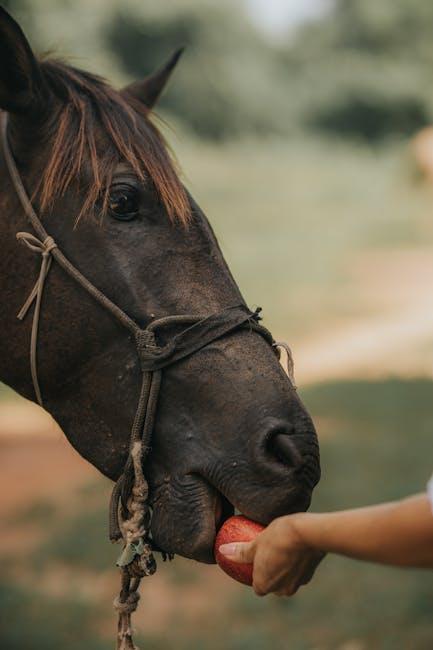Choosing the right diet for your beloved pet can feel like navigating a maze of options and opinions. Among the many choices pet owners face, the debate between grain and grain-free diets stands out as one of the most discussed and sometimes confusing topics. As a pet parent, your priority is ensuring the health and happiness of your furry companion, and understanding the nuances of these dietary options is essential. In this article, we aim to shed light on the differences between grain and grain-free diets, guiding you through the benefits and considerations of each. With warmth and clarity, we’ll explore what these diets entail, helping you make an informed decision that best suits the unique needs of your pet. Whether you’re a seasoned pet owner or new to the joys of pet parenthood, this guide is designed to provide you with the insights necessary to choose the best nutritional path for your four-legged family member.
Understanding Your Pets Nutritional Needs
When it comes to your pet’s diet, understanding the core components is crucial for ensuring their overall well-being. A significant decision many pet owners face is whether to opt for grain or grain-free diets. Grain-based diets typically include ingredients like corn, wheat, and barley. These grains can be excellent sources of carbohydrates, providing energy for your pet. Additionally, they often contain essential nutrients such as fiber and vitamins that can aid in digestion and support a healthy coat.
On the other hand, grain-free diets substitute grains with ingredients like potatoes, peas, or lentils. These alternatives can be beneficial for pets with grain allergies or sensitivities. However, it’s important to note that grain-free doesn’t necessarily mean carbohydrate-free. Both diet types can be nutritionally complete if balanced properly. Key factors to consider include:
- Age and activity level: Puppies and highly active pets may require more energy-rich foods.
- Health conditions: Certain health issues may benefit from specific diets.
- Allergies and intolerances: Consult with a vet to determine any dietary restrictions.
Choosing the right diet is a journey of understanding your pet’s unique needs. Whether grain or grain-free, the ultimate goal is a happy, healthy pet.
Exploring the Benefits and Drawbacks of Grain and Grain-Free Diets
When it comes to selecting the right diet for your furry friend, it’s essential to weigh both the benefits and drawbacks of grain and grain-free options. Grain-based diets often include ingredients like rice, oats, and barley, providing a source of carbohydrates and essential nutrients. These diets can be beneficial for pets with high energy needs, offering a steady release of energy throughout the day. Additionally, grains are rich in fiber, which can aid in digestion and maintain bowel health.
On the other hand, grain-free diets have gained popularity, particularly for pets with grain sensitivities or allergies. These diets often substitute grains with ingredients like sweet potatoes, peas, or lentils, aiming to mimic a more ancestral diet. Some potential benefits include reduced risk of food allergies and a focus on high-quality proteins. However, it’s important to consider potential drawbacks, such as the risk of nutritional imbalance if not properly formulated. Before making a switch, consult with your veterinarian to ensure your pet’s dietary needs are met.
- Grain-Based Diets: Energy provision, fiber-rich, nutrient-dense.
- Grain-Free Diets: Allergy-friendly, ancestral mimicry, high-quality proteins.

Identifying Allergies and Sensitivities in Pets
Understanding your pet’s dietary needs is crucial, especially when navigating the world of grains and grain-free options. Allergies and sensitivities in pets can manifest in various ways, including skin irritations, digestive issues, or even behavioral changes. It’s essential to observe your pet’s reactions to different foods and consult with a veterinarian to pinpoint any potential allergens.
- Common signs of allergies: Itching, redness, and hot spots on the skin.
- Digestive indicators: Vomiting, diarrhea, or excessive gas can suggest sensitivity to certain ingredients.
- Behavioral changes: Unusual lethargy or hyperactivity may also hint at dietary issues.
Once you’ve identified any adverse reactions, you can tailor your pet’s diet to their specific needs. For some pets, grain-free diets can alleviate symptoms, while others may thrive on a grain-inclusive regimen. Choosing the right diet involves a careful balance of understanding your pet’s unique requirements and ensuring they receive the necessary nutrients for a healthy, happy life.

Expert Tips for Making the Right Dietary Choice
When it comes to choosing between grain and grain-free diets for your pet, it’s essential to consider their specific needs and health conditions. Here’s a breakdown to help guide your decision:
- Understand Your Pet’s Health: Consult with a veterinarian to determine if your pet has any allergies or sensitivities. Some pets may benefit from grain-free diets due to allergies, while others thrive on grains.
- Evaluate Ingredients: Check the ingredient list on pet food labels. High-quality options should list a specific protein source as the first ingredient, whether grain or grain-free.
- Consider Nutritional Balance: Ensure the diet provides a balanced mix of proteins, fats, and carbohydrates. Both grain and grain-free foods can meet these requirements if formulated correctly.
Choosing the right diet is about understanding your pet’s unique requirements. Observe their behavior and energy levels as indicators of how well they are adapting to their diet. Remember, every pet is different, and what works for one may not work for another.

